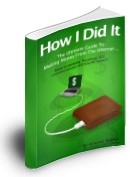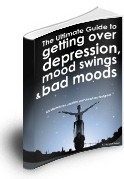



Perhaps there’s something you’re worrying about, or struggling with:
You might be waiting for the answer to come along. You might have spent hours thinking about this issue, or talking about it with loved ones. But all the thinking and talking just seems to make you feel worse – dwelling on the problem isn’t helping, but you can’t put it out of your mind.
Have you tried writing about it?
Probably not – but writing is one of the most effective problem-solving tools that you have. It’s free (unlike therapy or coaching), you can do it on your own (unlike talking to someone) and it lets you make real, tangible process (unlike thinking or worrying constantly).
In the book 59 Seconds: Think a Little, Change a Lot, Professor Richard Wiseman writes:
In several studies, participants who have experienced a traumatic event have been encouraged to spend just a few minutes each day writing a diary-type account of their deepest thoughts and feelings about it. … The results revealed that participants experienced a remarkable boost in their psychological and physical well-being, including a reduction in health problems and an increase in self-esteem and happiness.
Writing is effective because:
So how do you go about effectively working on your problems, in writing? There’s no one “right” method but you might want to try some of these:
Get a pen and notebook, or open up a blank document, and set a timer going. Now write for ten minutes, as fast as you can. Get all your thoughts down – however silly or irrelevant they might seem.
This is called “free-writing” and it’s a great way to access your subconscious and reach for that inner, deep knowledge which will help you come up with creative ways to solve your problems.
You can write in whatever way you like: you don’t need to produce full sentences. You might find that this kind of writing turns out looking like a journal excerpt.
Write your problem at the top of the page, and then list the numbers 1 – 20. Come up with as many ideas as you can to solve the problem. Don’t censor yourself: silly ideas are fine! You can always discount them later.
Like the first method, this helps you come up with creative ideas. It’s a very quick way to write, if you don’t really like expressing yourself in words.
Mindmapping helps you generate ideas and spot links between them. Start off by writing your problem in the middle of a plain sheet of paper. (There are also software tools you can use for mindmapping.)
Now write down any ideas which come to you, anywhere on the paper. You can connect them to the central problem, or connect them to one another, with lines or arrows. If it helps, you can use colors or little doodles to help you express your thoughts.
If you’re not sure where to begin – maybe you seem to “dry up” when you try the above methods – then use this list of questions as a starting point:
“What’s the problem, in one sentence?”
(Just defining your problem is an important step – often we don’t even get that far.)
“What have you tried already to solve it?”
“What else could you try?”
“Why haven’t you tried that yet?”
“Who could help you?”
You can mix and match the different methods. What’s important is that you start getting those thoughts onto paper – because otherwise you’ll just keep going over and over the same worries in your head.
What are you struggling with right now? Can you find just ten minutes today to write about it?
This is the first article on 2knowmyself to be written by someone else other than me. Ali is a close friend, a successful blogger and a very talented writer.
Ali has a blog that contains a mixture of personal development articles and articles that can teach you how to write professionally. I have learned a lot from Ali in the past years and i am really happy to share one of her posts here on 2knowmyself.
If you’d like to take your writing further, check out Ali Luke’s posts 7 Habits of Serious Writers and Eight Secrets Which Writers Won’t Tell You.
The book The ultimate guide to getting over depression was released by 2knowmself, the book provides a 100% guarantee for feeling better else you will be refunded. 2knowmysef is not a complicated medical website nor a boring online encyclopedia but rather a place where you will find simple, to the point and effective information that is backed by psychology and presented in a simple way that you can understand and apply. If you think that this is some kind of marketing hype then see what other visitors say about 2knowmyself.
Want to know more?
Blaming others for your problems
Depression Treatment without medication
How to get over anyone in few days (book)
How to make anyone fall in love with me fast (book)
How to end Depression instantly (book)
How to control people's minds (Course)
How to develop rock solid self confidence fast (course)
 How to make someone fall in love with you. Based on the psychology of falling in love |
 How to get over anyone in few days Breakups will never hurt like before. |
 How i became a dot com millionaire The ultimate guide to making money from the internet |

